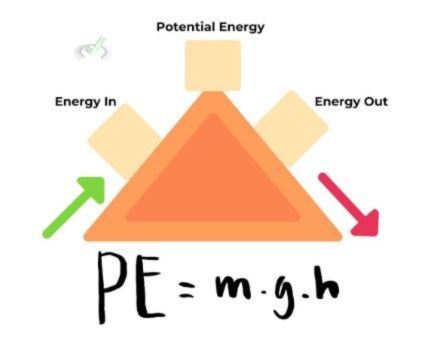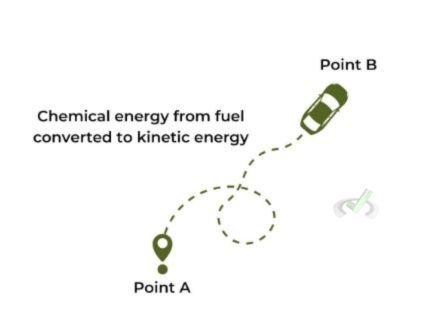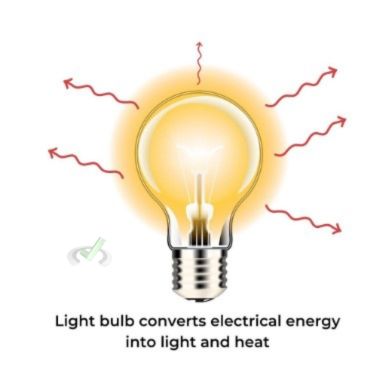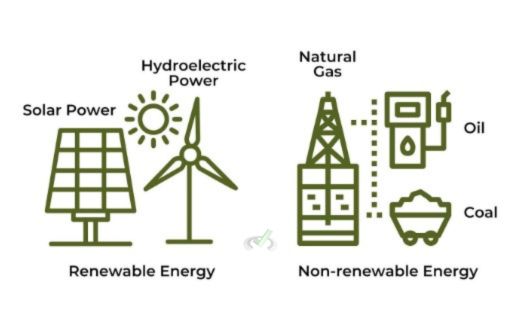Understanding energy is crucial in physics. Energy is all around us and is a fundamental part of how the universe works. Let's explore the different forms of energy, how they are used, and the principles governing them.
I. Introduction to Energy
Imagine riding a bike down a hill or turning on a light switch. These actions involve energy. Energy is the ability to do work or cause change.
In physics, work happens when a force moves an object over a distance. Change can mean moving something, heating it up, or changing its shape.
Energy exists in various forms, like kinetic energy, potential energy, thermal energy, and more. Energy can neither be created nor destroyed. It can only change from one form to another.
This principle is known as the conservation of energy. We encounter energy in different forms every day. From the food we eat to the electricity that powers our homes.
Types of Energy
Energy comes in several forms, each with unique characteristics:
- Kinetic Energy: The energy of motion. Anything that moves has kinetic energy. As an object's speed increases, its kinetic energy also increases. For example, a car driving down the road or a person running. The equation for kinetic energy is:

- Potential Energy: Stored energy based on an object's position or state. For example, a rock held above the ground has gravitational potential energy. A compressed spring also has potential energy because it can release energy when it expands. The equation for gravitational potential energy is:

- Thermal Energy: Energy is closely related to the temperature of an object. It is the total energy of the particles in an object due to their motion. The faster these particles move, the hotter the object becomes. Boiling water or the heat from the sun are examples.
- Chemical Energy: Energy stored in chemical bonds. This energy is released or absorbed during chemical reactions. Burning wood or digesting food are examples of chemical energy in action.
- Electrical Energy: Caused by the movement of electric charges. This energy powers our electronic devices. When you plug in a phone charger, electrical energy flows to charge the battery.
- Nuclear Energy: Energy stored in an atom’s nuclei. It is released through nuclear reactions, like fission and fusion. Nuclear power plants and the sun produce energy this way.
II. Properties of Energy
Let's discuss some key properties and principles of energy:
Conservation of Energy
The law of conservation of energy states that energy cannot be created or destroyed. It can only change from one form to another. For instance, when you ride a bike downhill, conversion of potential energy to kinetic energy happens.
Transfer of Energy
Energy can be transferred from one object to another. When you push a swing, you transfer energy from your muscles to the swing, causing it to move. Heat transfer is another example, like when you feel warmth from a hot cup of cocoa.
Work and Power
Work: Work is done when a force moves an object over a distance. It is calculated by multiplying the force by the distance moved in the direction of the force. The equation for work is:

If you lift a book, you are doing work against gravity.
Power: Power is the rate at which work is done. It is calculated by dividing the work done by the time taken to do it. The equation for power is:

A powerful engine can do a lot of work in a short amount of time.
III. Energy Transformation and Efficiency
Energy transformation
Energy transformation is the process of changing energy from one form to another. For example, a train engine converts chemical energy in fuel into kinetic energy to move the car.

Efficiency
Efficiency measures how well energy is converted from one form to another. Not all energy is converted perfectly; some energy is always lost as heat. For example, a light bulb transforms electrical energy into light and heat. If it produces more light than heat, it is more efficient.

IV. Energy in Technology and Environment
Understanding energy helps us develop better technologies and protect our environment. Engineers design energy-efficient machines to reduce waste. Scientists study renewable energy sources like solar and wind to provide clean energy. Managing energy use is vital for a sustainable future.
Renewable vs. Non-Renewable Energy
- Renewable Energy: This energy comes from sources that can be replenished, like solar, wind, and hydroelectric power. These sources are more sustainable because they don't run out and have less environmental impact.
- Non-renewable energy: Comes from certain sources that will eventually run out, like fossil fuels (coal, oil, and natural gas). Using these can harm the environment due to pollution and greenhouse gases.

Future Energy Technologies
- Advancements in Battery Storage: Better batteries can store more energy and last longer. This is crucial for using renewable energy, as it helps store solar and wind energy for later use.
- Nuclear Fusion: This process powers the sun and has the potential to provide almost limitless energy. Scientists are working on making fusion a practical energy source on Earth.
- Smart Grids: These advanced electrical grids can efficiently manage energy supply and demand. They help integrate renewable energy sources and reduce energy waste.
V. Wrap-Up and Key Terms
Let’s review the key points we covered about the concepts of energy:
- Kinetic Energy: Energy of motion.
- Potential Energy: Stored energy based on position.
- Thermal Energy: Energy related to temperature.
- Chemical Energy: Energy stored in chemical bonds.
- Electrical Energy: Energy from electric charges.
- Nuclear Energy: Energy in the nucleus of an atom.
- Conservation of Energy: Energy cannot be created or destroyed.
- Work: Force applied over a distance.
- Power: Rate at which work is done.
- Renewable Energy: Energy from sources that can be replenished.
- Non-renewable Energy: Energy from sources that will eventually run out.
VI. Practice Questions
Sample Practice Question 1
What form of energy is associated with motion?
A. Potential Energy
B. Thermal Energy
C. Kinetic Energy
D. Chemical Energy
Ans. C
Kinetic energy is the energy of motion. Any object in motion has kinetic energy.
Sample Practice Question 2
Which law states that energy cannot be created or destroyed, only transformed?
A. Law of Work
B. Conservation of Energy
C. Law of Power
D. Thermal Dynamics
Ans. B
The conservation of energy principle states that energy cannot be created or destroyed; it can only be transformed from one form to another.







 To help you achieve your goal MCAT score, we take turns hosting these
To help you achieve your goal MCAT score, we take turns hosting these 





















 reviews on TrustPilot
reviews on TrustPilot